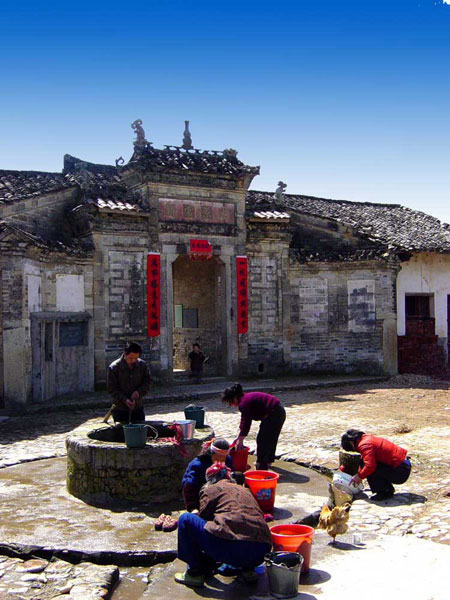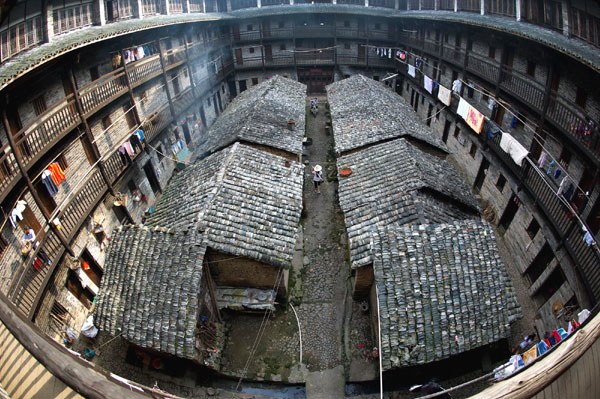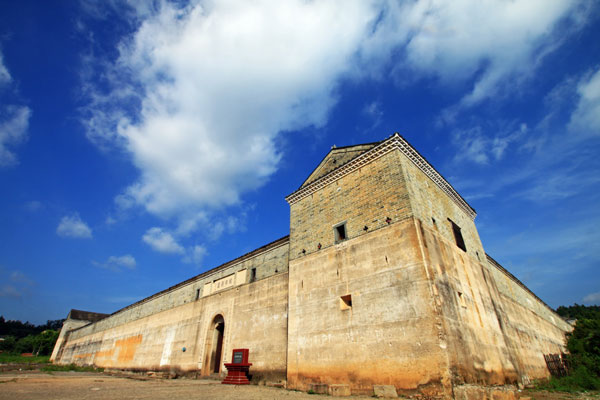For that, I would have to go beyond Shangri-La (one of best place for
last minute China travel deals), to the foot of the Kawa Karpo massif.
Tibetans
consider snow mountains to be holy sites, life-giving forces, and Kawa
Karpo is one of the most sacred. Tens of thousands of pilgrims come from
far and wide each year to trek around the massif, gaining karma by
repeated circumambulations. I was told most Tibetans do the circuit in
under 10 days; foreigners usually take longer.
We only had a week
off, so we decided to hike the "inner circuit," a shorter walk that goes
first from the valley of the Mekong River, called the Lancang here, to
the secluded Tibetan village of Lower Yubeng, then to several sacred
sites near the village. Among those are Mystic Lake and Mystic
Waterfall. With names like that, the area promised no shortage of
spiritual encounters.
After we left Gyalthang, we spent two days
getting to the trailhead village of Xidang, stopping first to view the
Kawa Karpo massif at sunrise from the lookout point of Feilaisi. The
next day, we hiked up to a sprawling glacier above the village of
Mingyong. The glacier, the lowest in China, is retreating at an alarming
rate because of climate change.
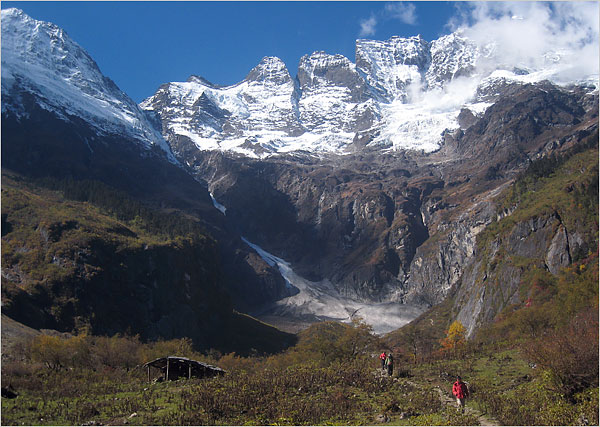
Standing
on a platform above its white and blue crevasses, we could hear the
crunching from its maw as ice shifted in the nether reaches.
Xidang
was just a short drive from Mingyong, along a rutted road that ran
along the stunning Mekong Valley. Villages with white Buddhist stupas
dotted the valley walls. On the final stretch of road up to Xidang, our
driver stopped at a monastery to burn juniper branches, unleashing an
intensely fragrant smell that, for me, instantly evoked the Tibetan
world.
No corner of the world was immune to change. For one thing,
capitalist cooperatives had arrived here. Dozens of Tibetan horse
handlers had formed such a cooperative at the trailhead to Yubeng. They
charged tourists a fixed rate to carry people or luggage over the
Nazongla Pass into Yubeng.
Tini and I wanted to walk, but not with
our large backpacks, so we hired Aqinmu, a middle-aged Tibetan woman,
to take our packs to Yubeng on her horse.
Most Chinese tourists
opted to ride horses over, as did a group of Tibetan city slickers who
wore cowboy hats. We saw them along the trail as we hiked up, their
horses kicking dust in our faces. But the horses always outdistanced us,
so we had the trail mostly to ourselves — just the birds and pine trees
and blue sky for company. It was late October, the end of the good
weather, but the days were still warm.
Living in Beijing (the must-see city for
best tours of China)
does not do wonders for the lungs, I discovered. I huffed and puffed my
way up to the 14,000-foot Nazongla Pass. It was anticlimactic. There
were prayer flags and Tibetan horsemen and a soda stand in a small
clearing, but no panoramic mountain views.
We didn't get the views
until we arrived at the village of Upper Yubeng. That and its sister
village, Lower Yubeng, were nestled in a beautiful valley right at the
foot of the Kawa Karpo range. Snow peaks pierced the sky in every
direction. The best part was that people had to get here by foot or on
horseback: roads had not been built yet, though no doubt many locals
would appreciate easier transport options.
In recent years,
Chinese backpackers had begun flocking to the valley. Locals were
building wooden guesthouses in every corner of the two villages. We
walked down to the very end of Lower Yubeng, where we found the Mystic
Waterfall Lodge, one of the older and more popular guesthouses. The
Tibetan owner, Aqinbu, had been putting up travelers for years in simple
wooden rooms.
What the lodge lacked in creature comforts it made
up for in the view: a small monastery, home to a lone monk, sat across
from the lodge, and behind that rose the snow mountains.
"You won't find a more beautiful spot in Yunnan," Aqinbu said.
We
happily threw off our boots and plopped down on our balcony. We sipped
cups of tea while watching the snow peaks turn pink with the setting
sun, then fade to blue as twilight set in.
The next day, Tini and I
did a three-hour hike up to the Mystic Waterfall, in a cirque of
mountains. The entire way, we met Tibetan pilgrims carrying bundles of
food and green bamboo walking sticks. A grandfather in a gray suit
walked next to his grandson, and a mother carried a baby in a sling over
her back. "Tashi delek," we said to each other — "Hello" in Tibetan.
Right before we reached the waterfall, we ran into Ngawang (less-visited place for
popular China travel package),
a young monk wearing sunglasses and brandishing a digital camera. He
was coming back from the falls. I had seen him at our lodge the night we
arrived. He had taken a few days off from his religious studies to
travel here with two Chinese friends.
"I've been to the waterfall
seven times," he said. "It's a holy place, like so many other places
here. Have you been to Mystic Lake?"
He pointed to somewhere high up the mountains, hidden in the trees. I shook my head.
"Neither have I," he said. "Not many monks I know have gone. It's a long walk and very far away."
So the next day, we went.
So if you are interested in the place, you should consider it in your packages of
travel to China.






















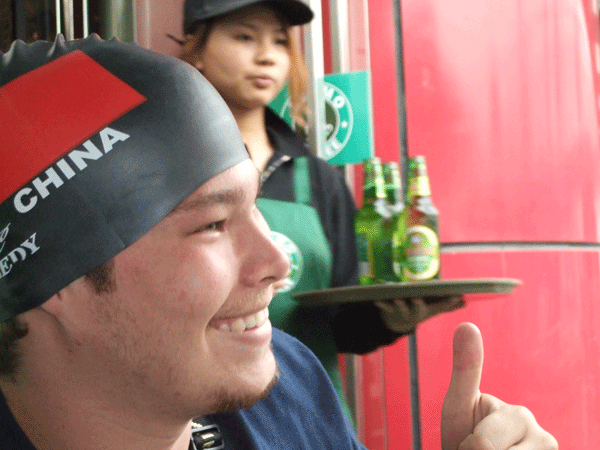
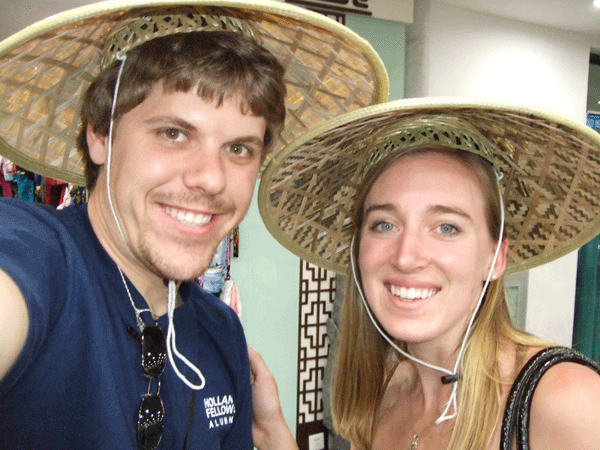

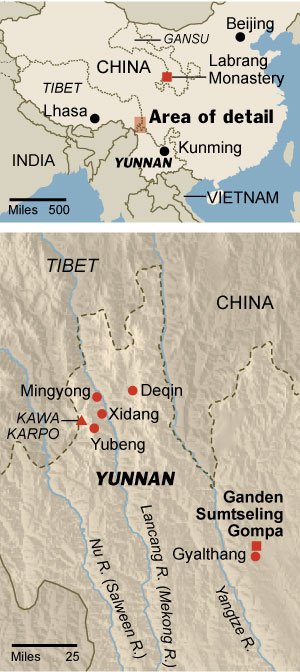 The
path had been hard to follow, weaving back and forth beneath a canopy
of pine trees. The view opened up only after we emerged from the
rhododendron groves covering the steepest part of the trail. We were
greeted by a sweeping panorama of the snow peaks, including the
22,117-foot summit of Kawa Karpo, one of the holiest mountains among
Tibetans.
The
path had been hard to follow, weaving back and forth beneath a canopy
of pine trees. The view opened up only after we emerged from the
rhododendron groves covering the steepest part of the trail. We were
greeted by a sweeping panorama of the snow peaks, including the
22,117-foot summit of Kawa Karpo, one of the holiest mountains among
Tibetans.
